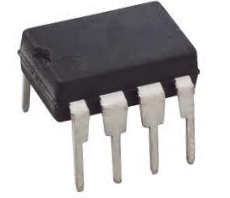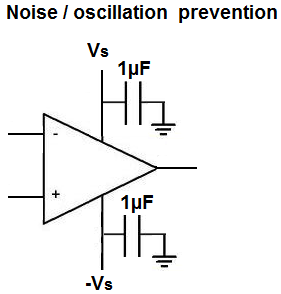How to Prevent Oscillations/Noise In Op Amps

When configuring an op amp circuit, measures can be taken to reduce the noise that enters into the op amp.
One chief way in which noise is picked up into an op amp is through the power supply.
All op amps need power in order to work. They need DC bias voltage in order to be able to amplify a signal. However, these power leads that go into the op amp can pick up noise and oscillations that can make an op amp output signal noisy. How can this noise pickup be reduced so that we can have a cleaner output signal?
One thing that can be done is to make the power as short and direct as possible. Extreme and excessively long wires act, essentially, as antennas, picking up unwanted noises and oscillations. The shorter and more direct the leads are going into the op amp power pins, the less noise susceptibility will occur.
Op amps also produce noise from fluctations in the power supply due to load changes. Voltages can shift rapidly when there
are changes in loads in a circuit. This can come up as noise in an op amp. To prevent this, we hook up smoothing capacitors on the
supply power leads to ground, which
help balance the fluctations in voltage that may occur. This is shown below.

A 1µF ceramic capacitor or a 1µF tantalum capacitor should work. This leads to a more steady signal and, thus, less variance, which causes less noise and
oscillations in the op amp output signal.